Abstract
Two experiments studied how added response requirements affected fixed-interval schedule performance. Experiment 1 involved tandem fixed-interval fixed-ratio schedules, and Experiment 2 studied conjunctive fixed-interval fixed-ratio schedules. In both, pigeons' output, defined as overall response rate or as responses during the interval, first increased and then decreased as the ratio was raised. With small ratio requirements, the frequency of reinforcement in time either did not change or decreased slightly. With progressively larger ratios, reinforcement frequency decreased consistently. Alternative explanations were discussed. The first, a reinforcement theory account, was that response strength is an increasing monotonic function of both the response requirement and reinforcement frequency, and the bitonic output function represents interacting effects. Increases in the response requirement accompanied by small changes in reinforcement frequency enhance output, but further increases result in large enough decrements in reinforcement frequency so that output is lowered. The second explanation does not view reinforcement as a basic process but, instead, derives from concepts of economics and conservation. Organisms allocate their behavior among alternatives so as to maximize value, where value is a function of the responses that can occur in a given situation under the set of restrictions imposed by particular schedules. One form of this theory explicitly predicts that output is a bitonic function of ratio requirements in simple ratio schedules. However, it was not clear that this model could explain the present effects involving joint ratio and interval schedule restrictions.
Keywords: output, tandem FI FR schedules, conjunctive FI FR schedules, response number requirements, reinforcement frequency, reinforcement theory, economic theory, key peck, pigeons
Full text
PDF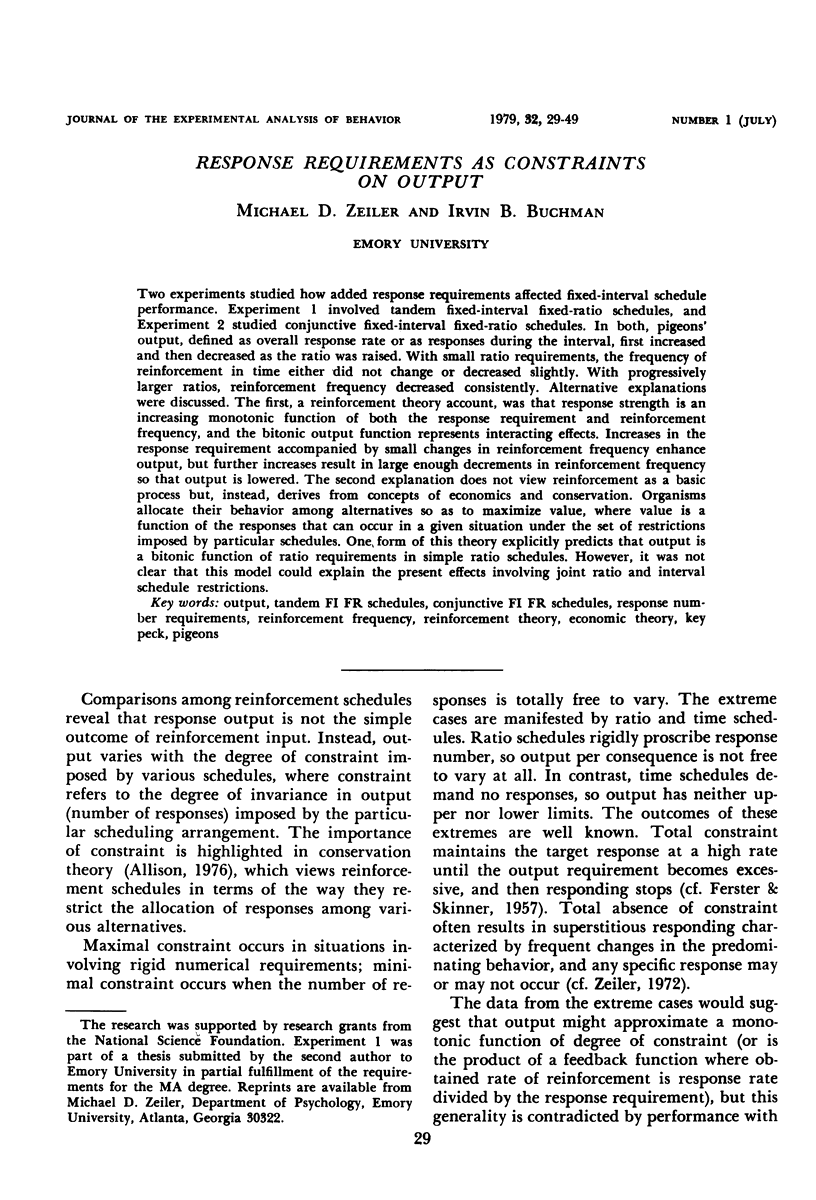

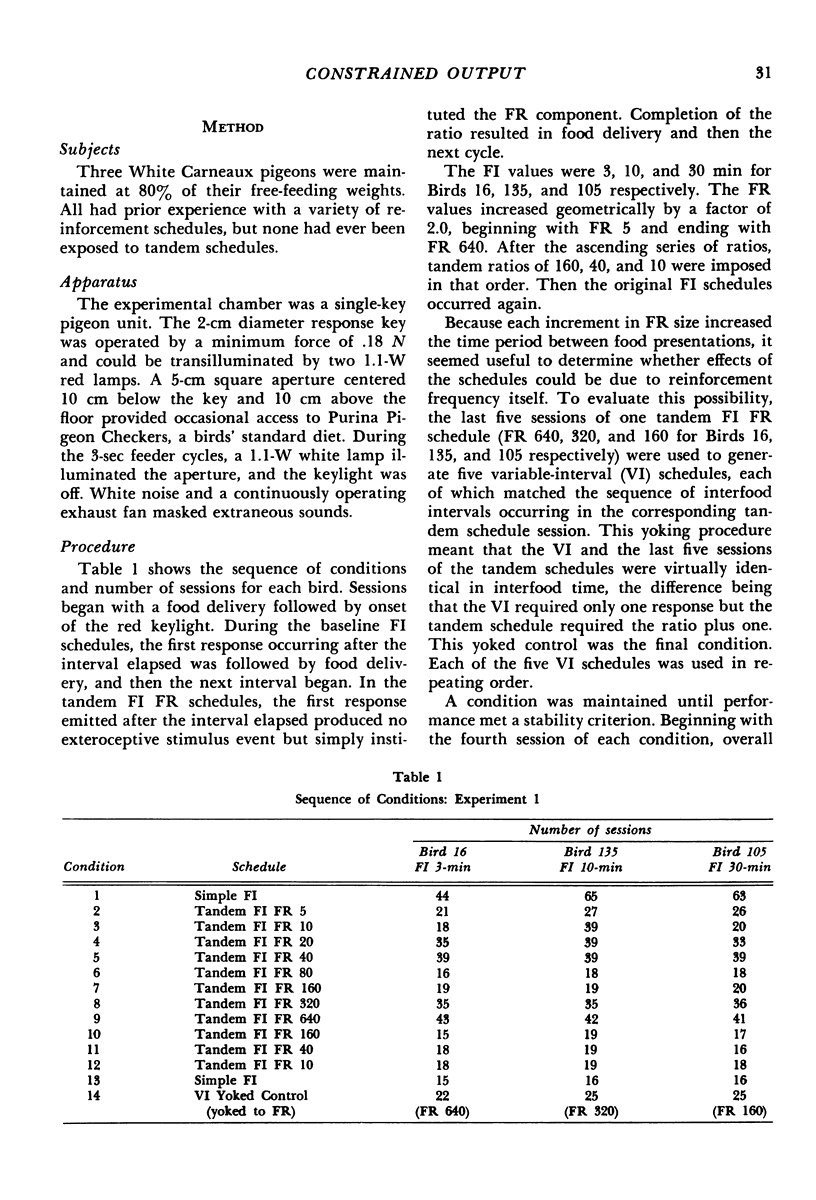

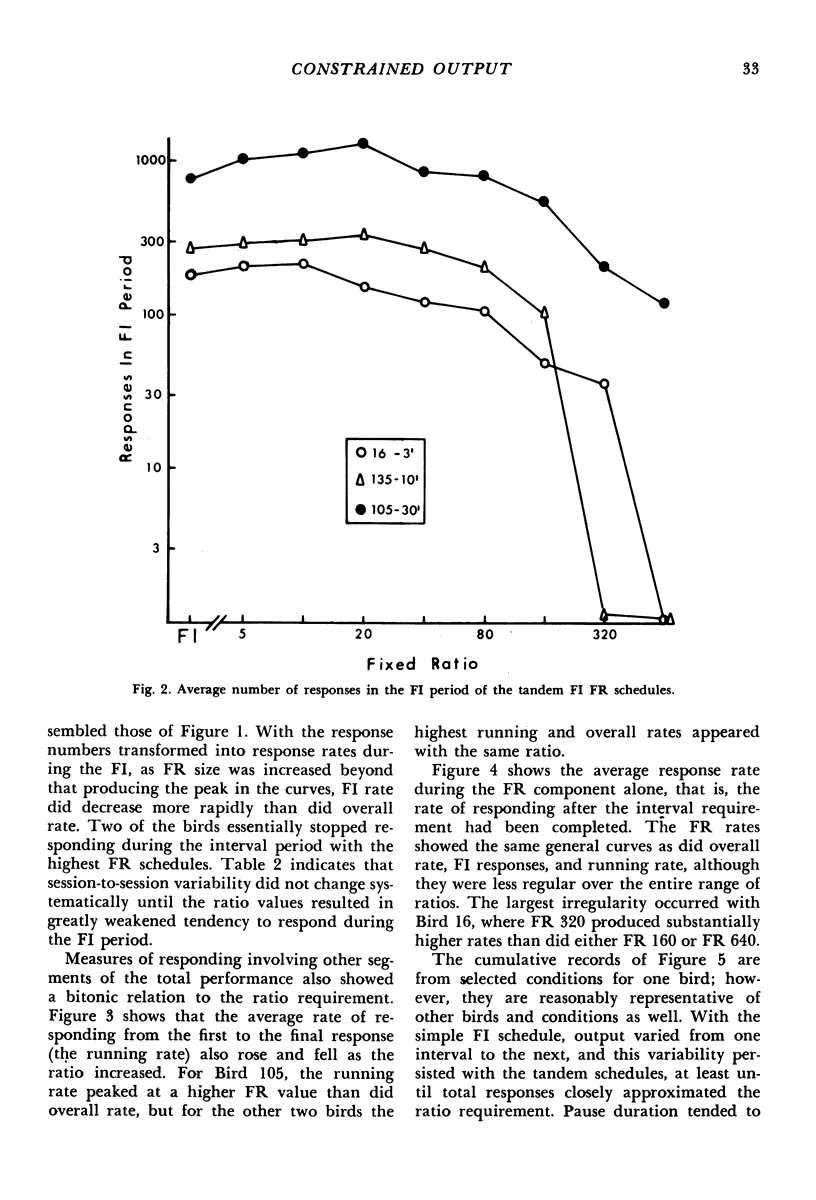
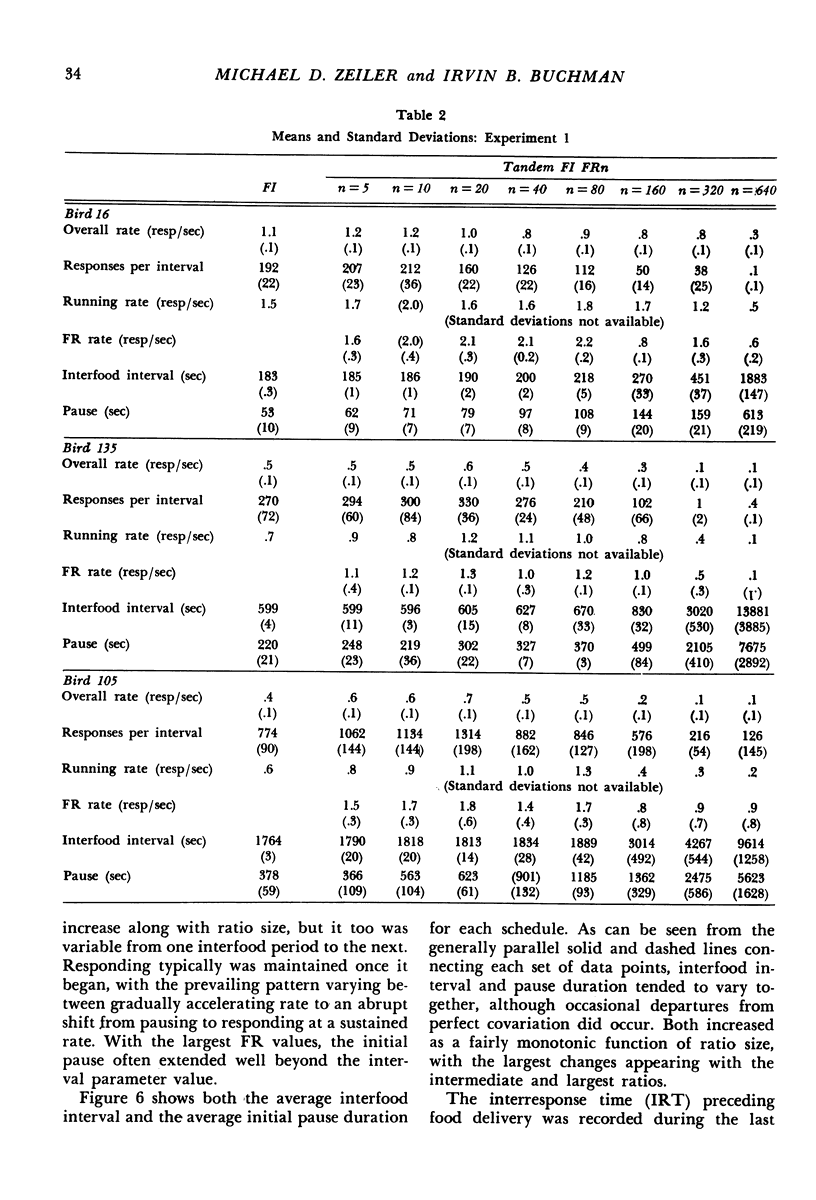
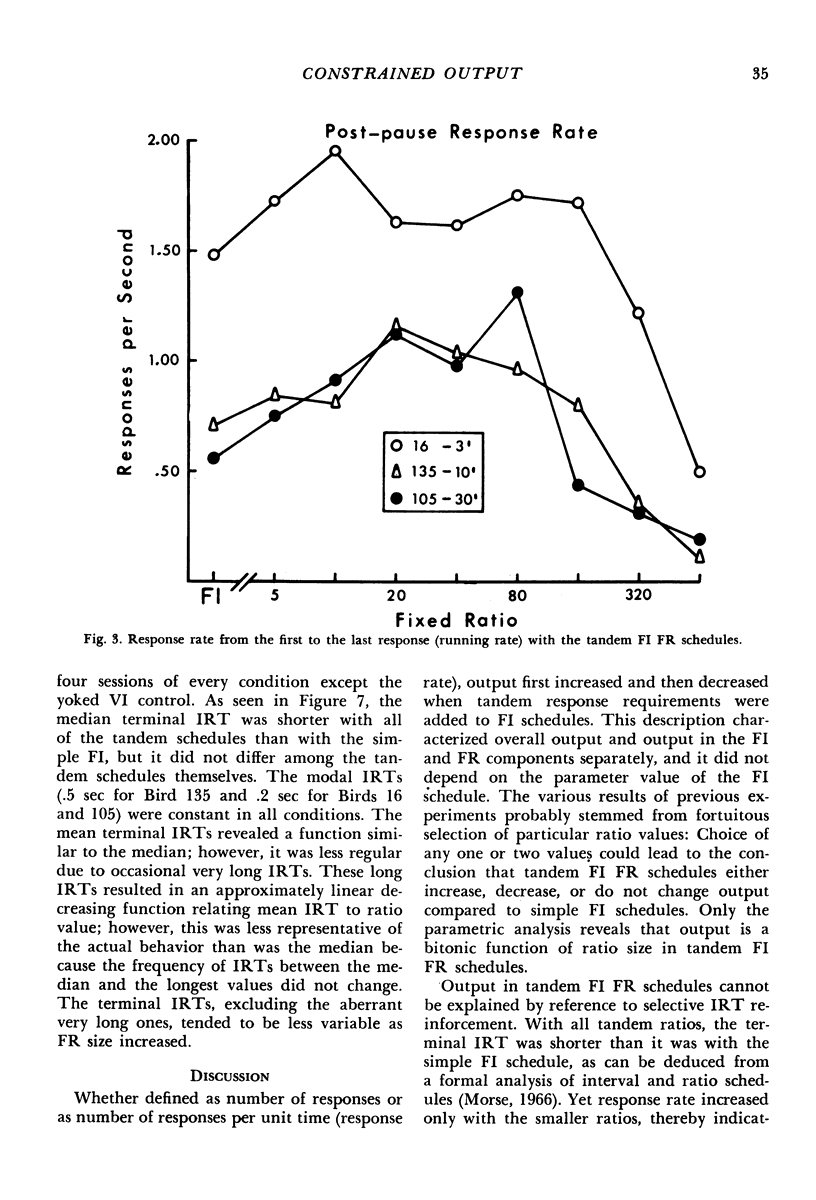
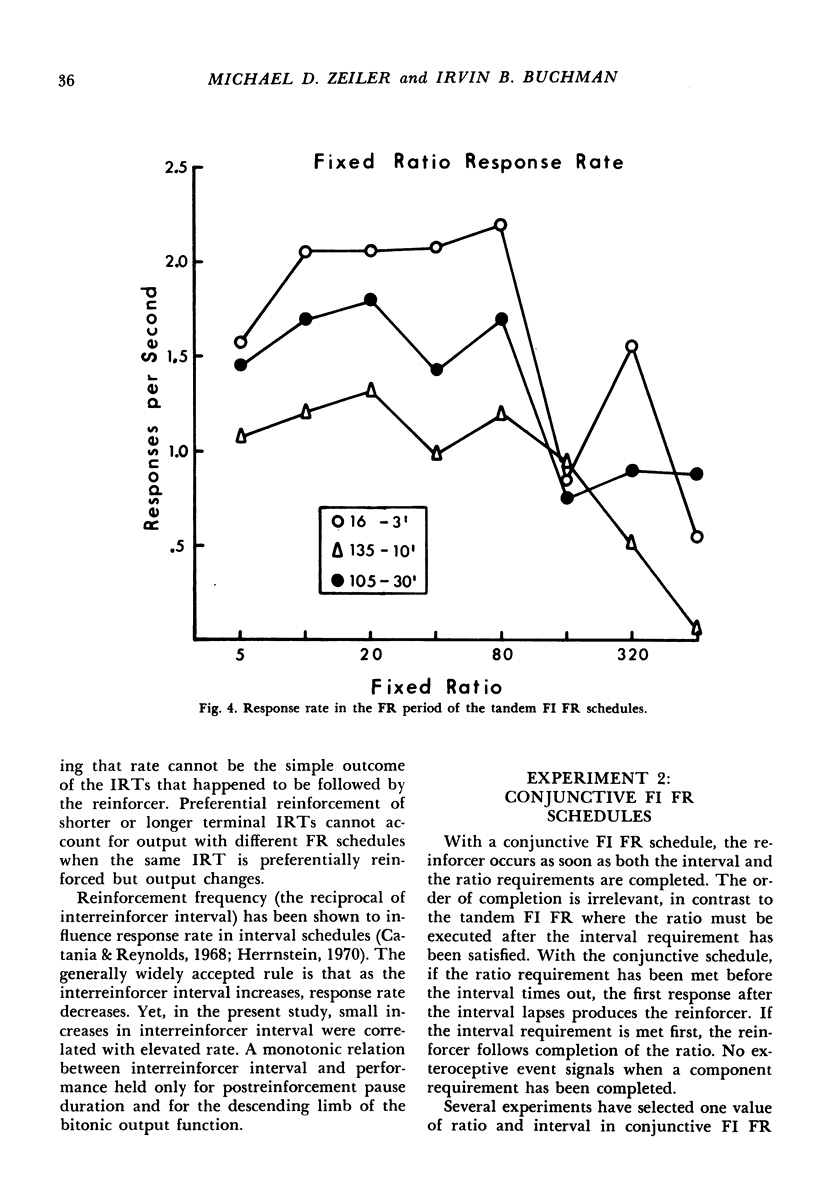
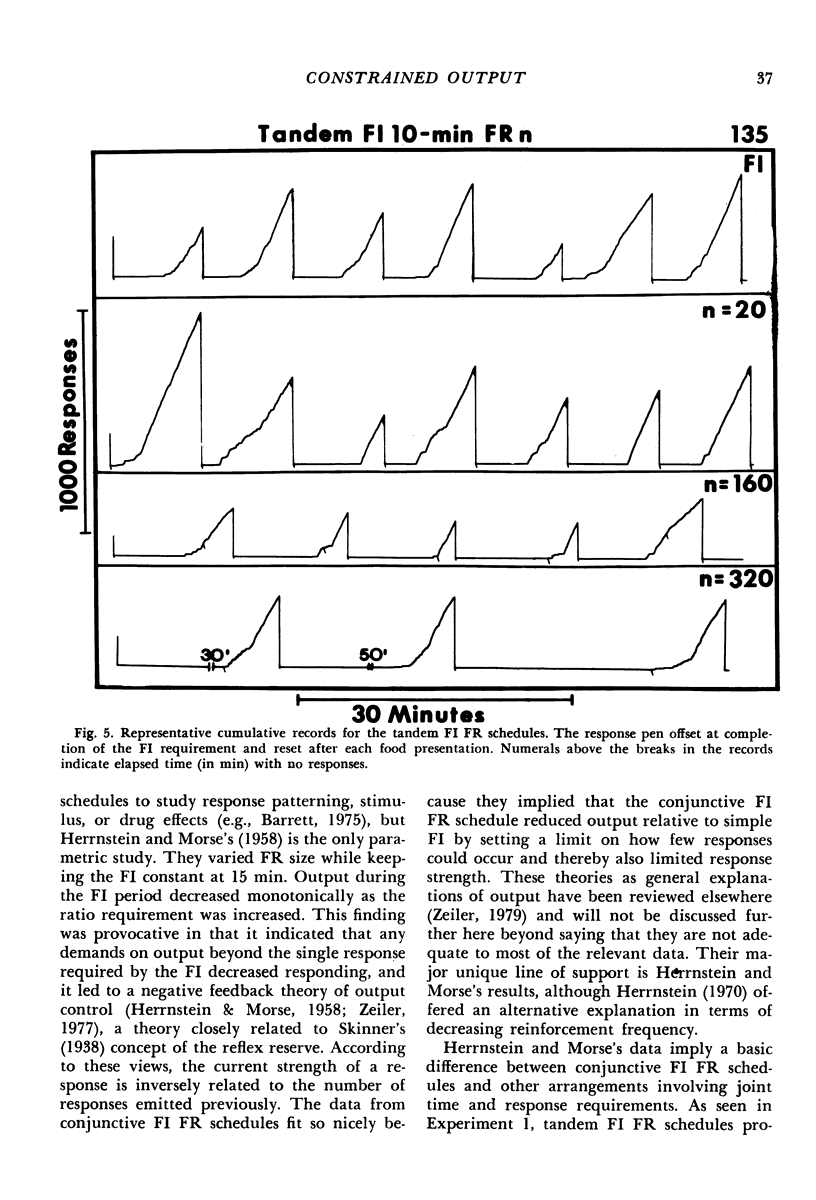
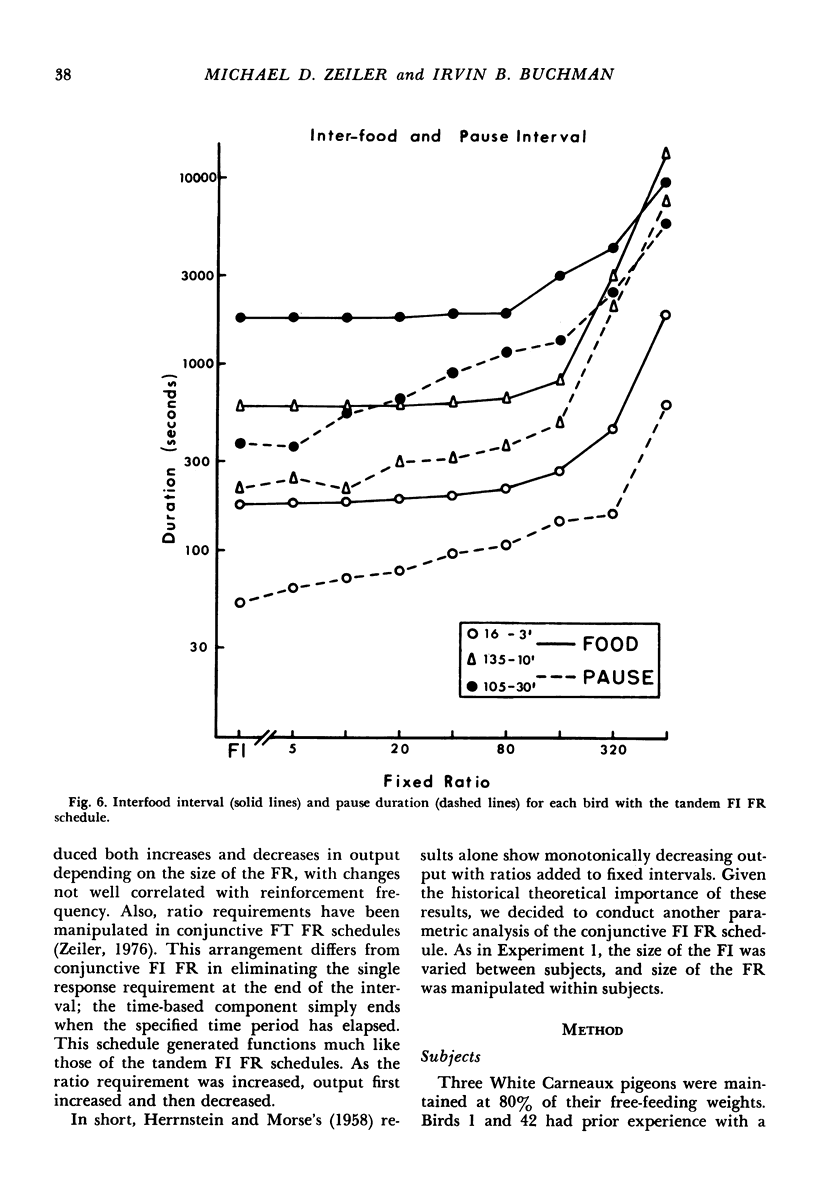

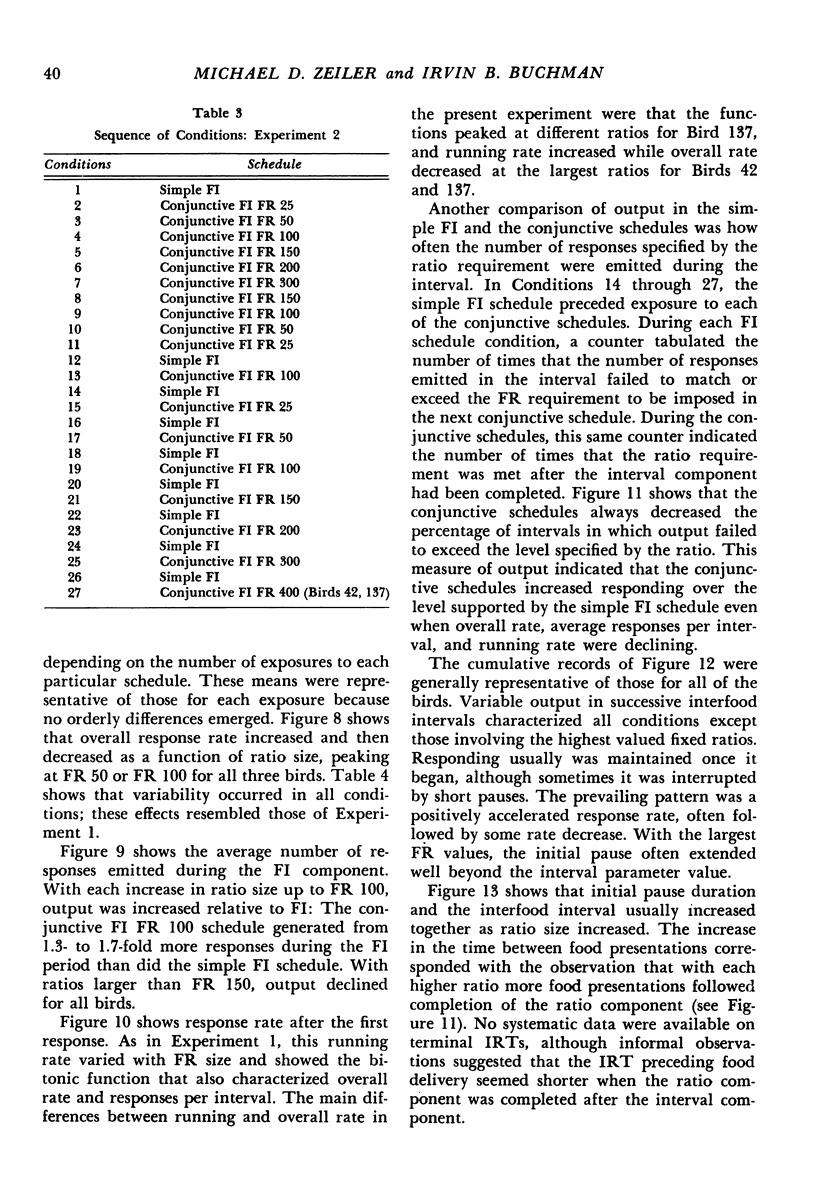

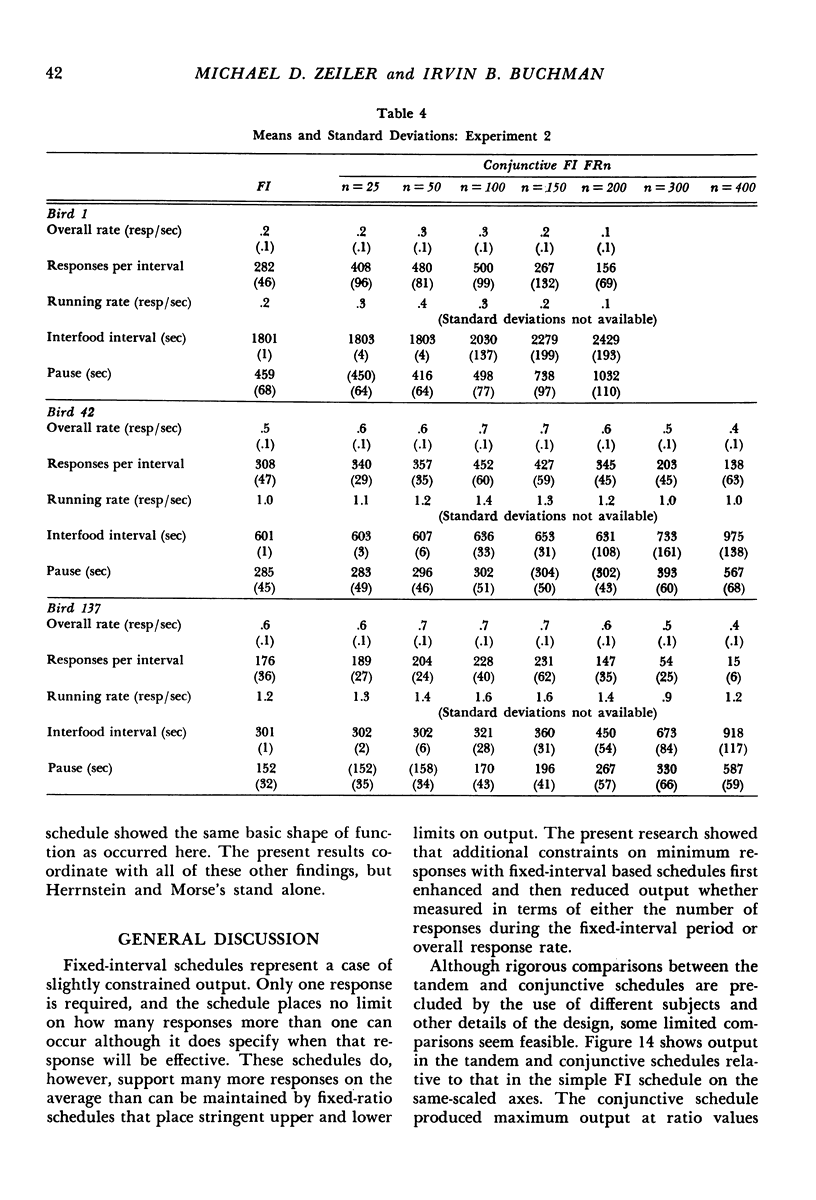
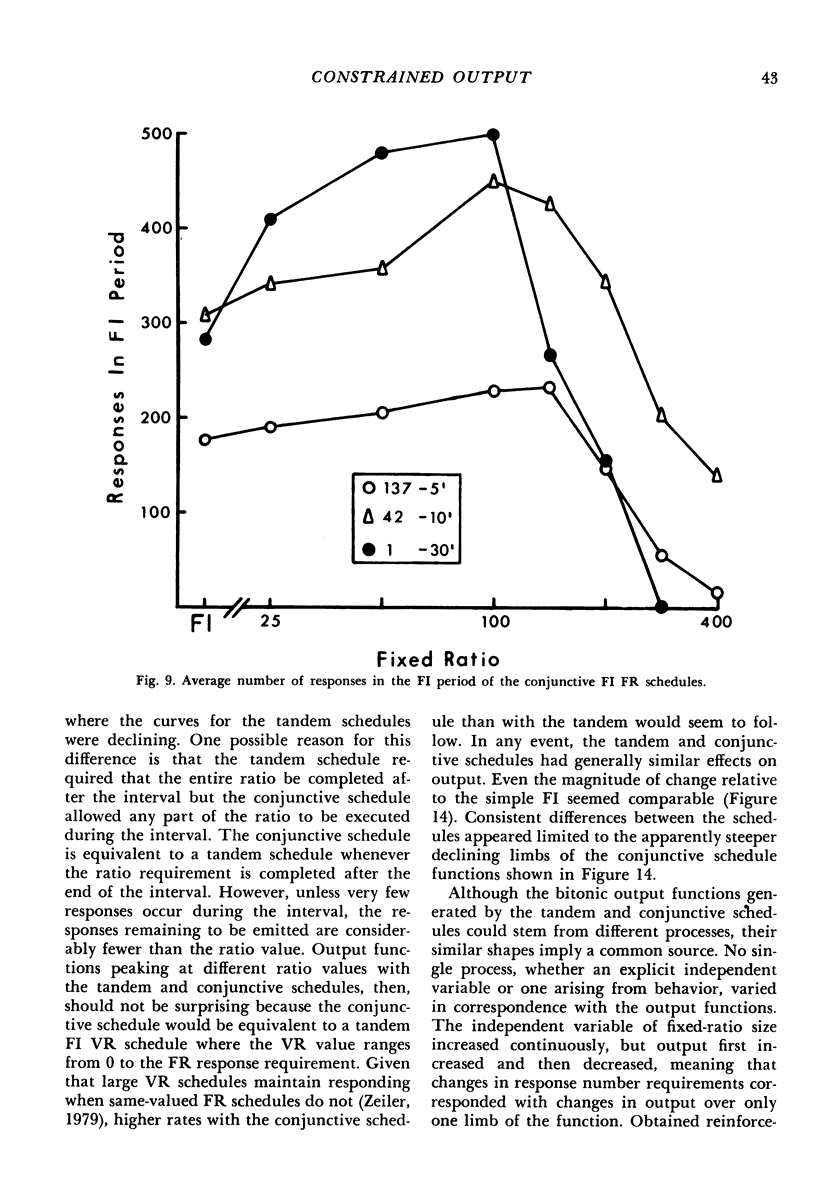
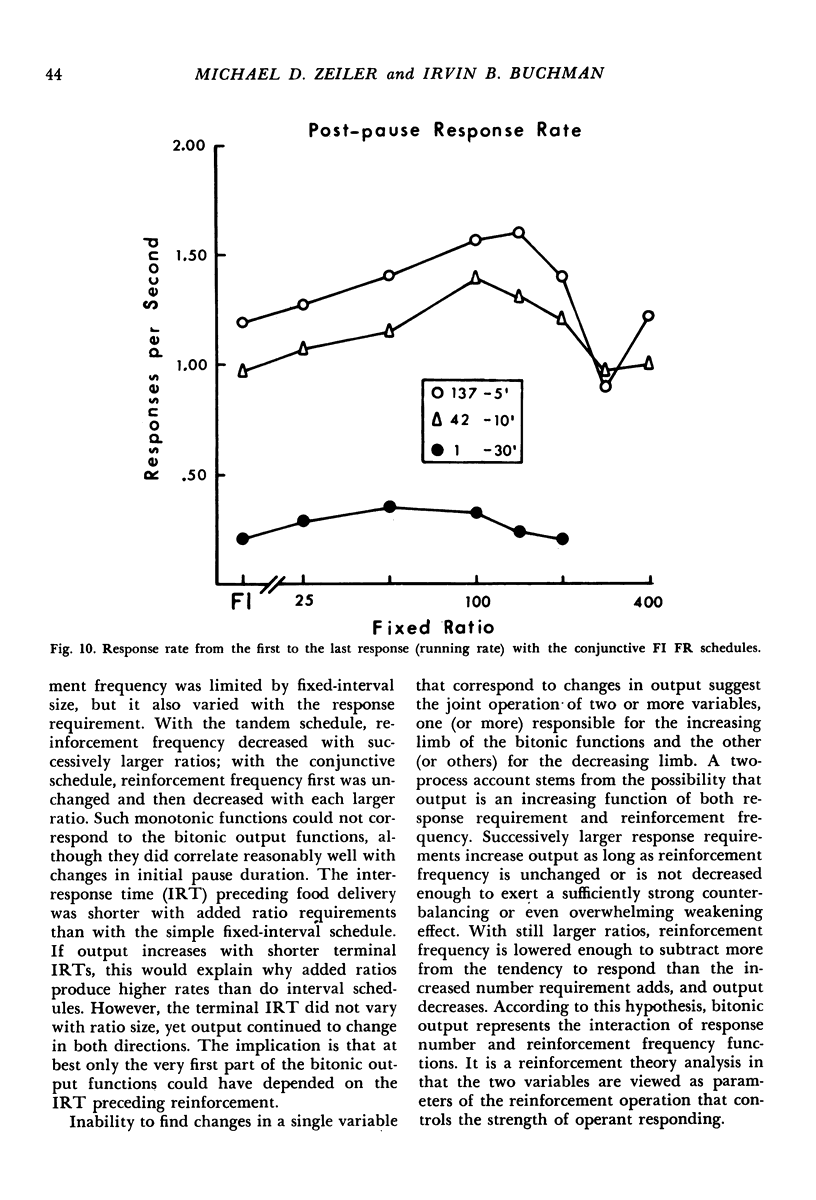

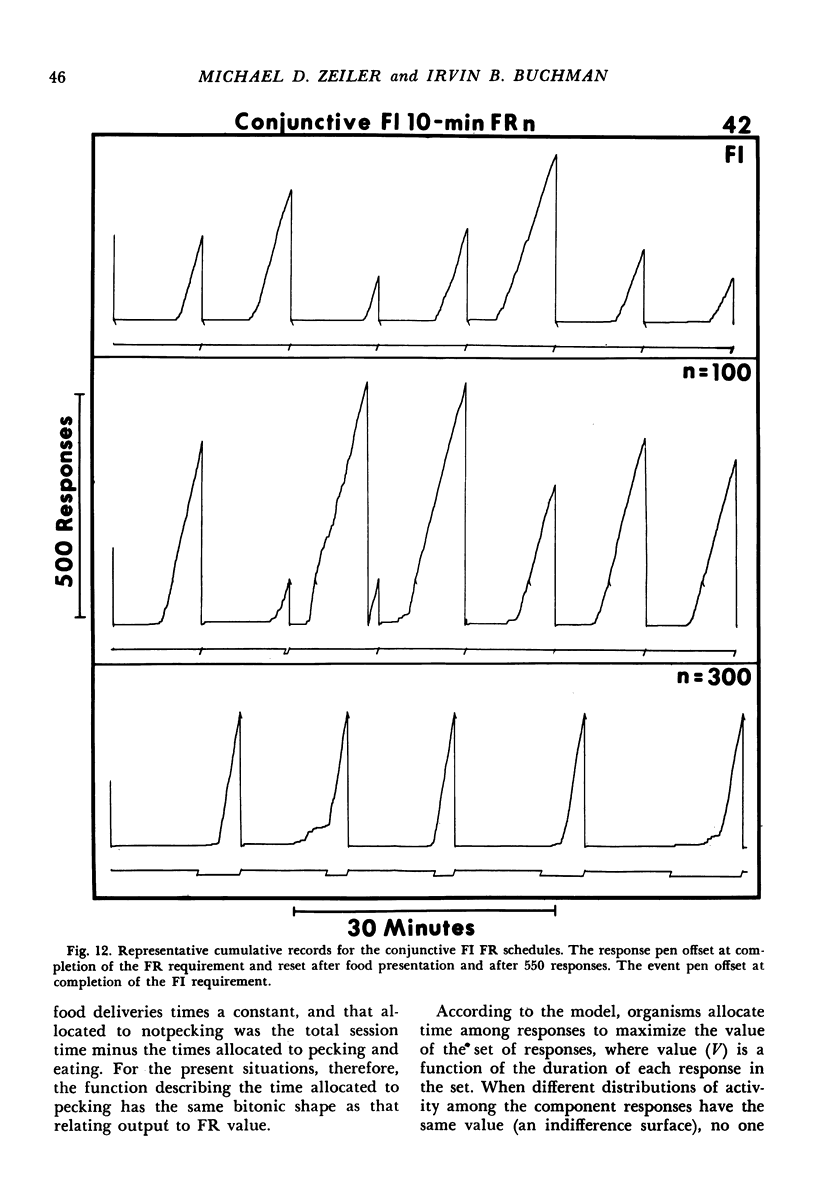
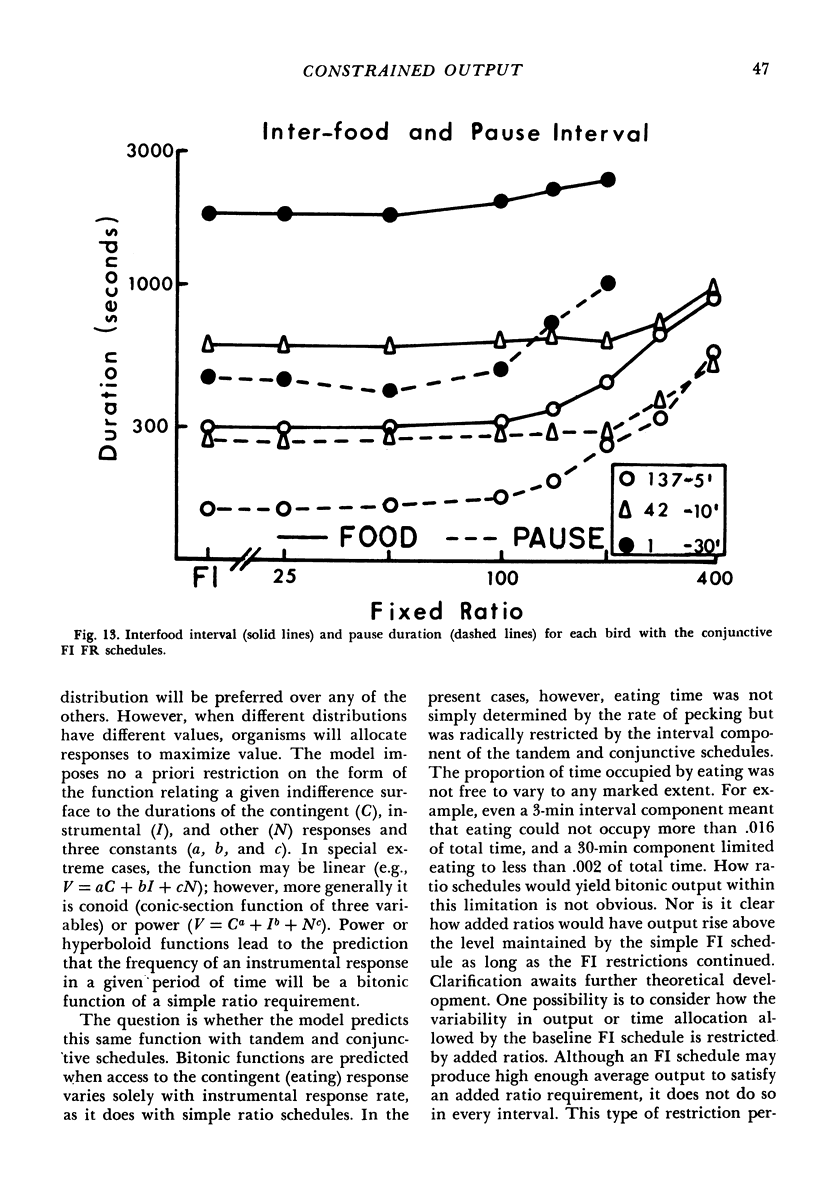
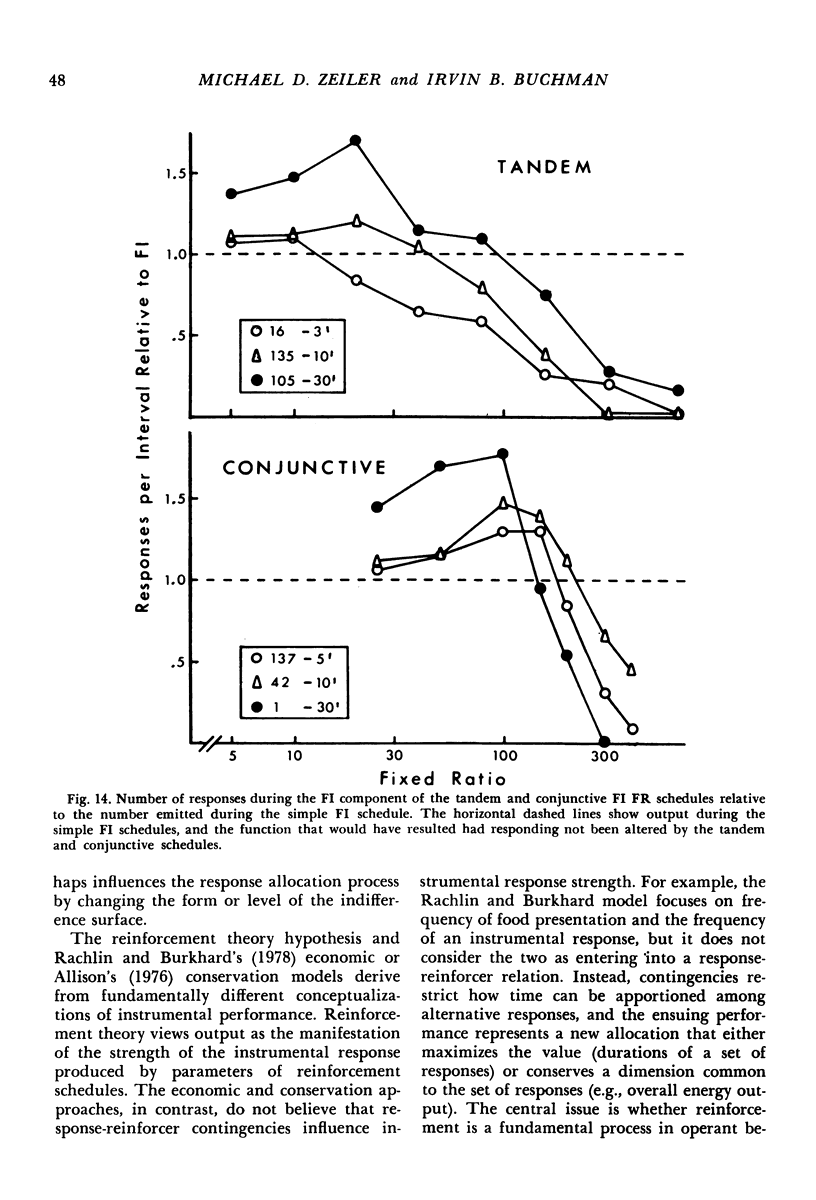
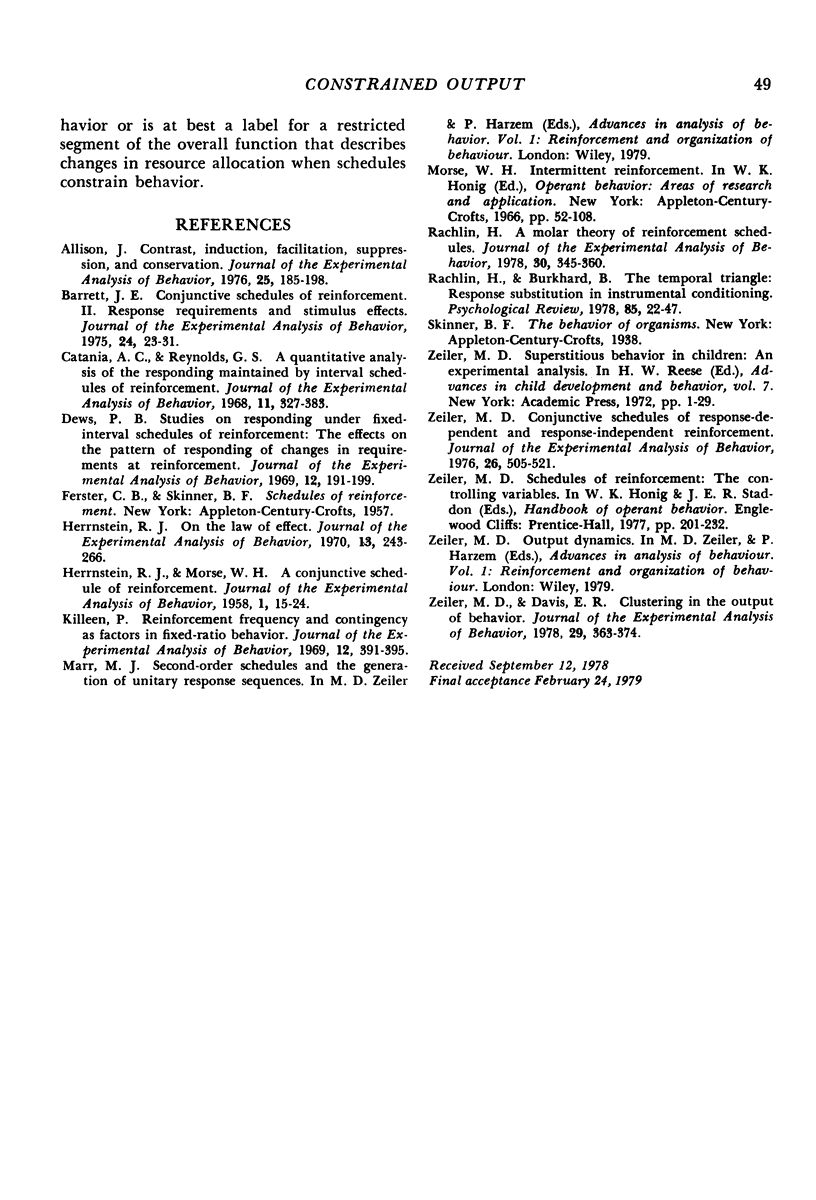
Selected References
These references are in PubMed. This may not be the complete list of references from this article.
- Allison J. Contrast, induction, facilitation, suppression, and conservation. J Exp Anal Behav. 1976 Mar;25(2):185–198. doi: 10.1901/jeab.1976.25-185. [DOI] [PMC free article] [PubMed] [Google Scholar]
- Barrett J. E. Conjunctive schedules of reinforcement II: response requirements and stimulus effects. J Exp Anal Behav. 1975 Jul;24(1):23–31. doi: 10.1901/jeab.1975.24-23. [DOI] [PMC free article] [PubMed] [Google Scholar]
- Catania A. C., Reynolds G. S. A quantitative analysis of the responding maintained by interval schedules of reinforcement. J Exp Anal Behav. 1968 May;11(3 Suppl):327–383. doi: 10.1901/jeab.1968.11-s327. [DOI] [PMC free article] [PubMed] [Google Scholar]
- Dews P. B. Studies on responding under fixed-interval schedules of reinforcement: the effects on the pattern of responding of changes in requirements at reinforcement. J Exp Anal Behav. 1969 Mar;12(2):191–199. doi: 10.1901/jeab.1969.12-191. [DOI] [PMC free article] [PubMed] [Google Scholar]
- HERRNSTEIN R. J., MORSE W. H. A conjunctive schedule of reinforcement. J Exp Anal Behav. 1958 Jan;1:15–24. doi: 10.1901/jeab.1958.1-15. [DOI] [PMC free article] [PubMed] [Google Scholar]
- Herrnstein R. J. On the law of effect. J Exp Anal Behav. 1970 Mar;13(2):243–266. doi: 10.1901/jeab.1970.13-243. [DOI] [PMC free article] [PubMed] [Google Scholar]
- Killeen P. Reinforcement frequency and contingency as factors in fixed-ratio behavior. J Exp Anal Behav. 1969 May;12(3):391–395. doi: 10.1901/jeab.1969.12-391. [DOI] [PMC free article] [PubMed] [Google Scholar]
- Rachlin H. A molar theory of reinforcement schedules. J Exp Anal Behav. 1978 Nov;30(3):345–360. doi: 10.1901/jeab.1978.30-345. [DOI] [PMC free article] [PubMed] [Google Scholar]
- Zeiler M. D. Conjunctive schedules of response-dependent and response-independent reinforcement. J Exp Anal Behav. 1976 Nov;26(3):505–521. doi: 10.1901/jeab.1976.26-505. [DOI] [PMC free article] [PubMed] [Google Scholar]
- Zeiler M. D., Davis E. R. Clustering in the output of behavior. J Exp Anal Behav. 1978 May;29(3):363–374. doi: 10.1901/jeab.1978.29-363. [DOI] [PMC free article] [PubMed] [Google Scholar]
- Zeiler M. D. Superstitious behavior in children: an experimental analysis. Adv Child Dev Behav. 1972;7:1–29. doi: 10.1016/s0065-2407(08)60438-3. [DOI] [PubMed] [Google Scholar]


